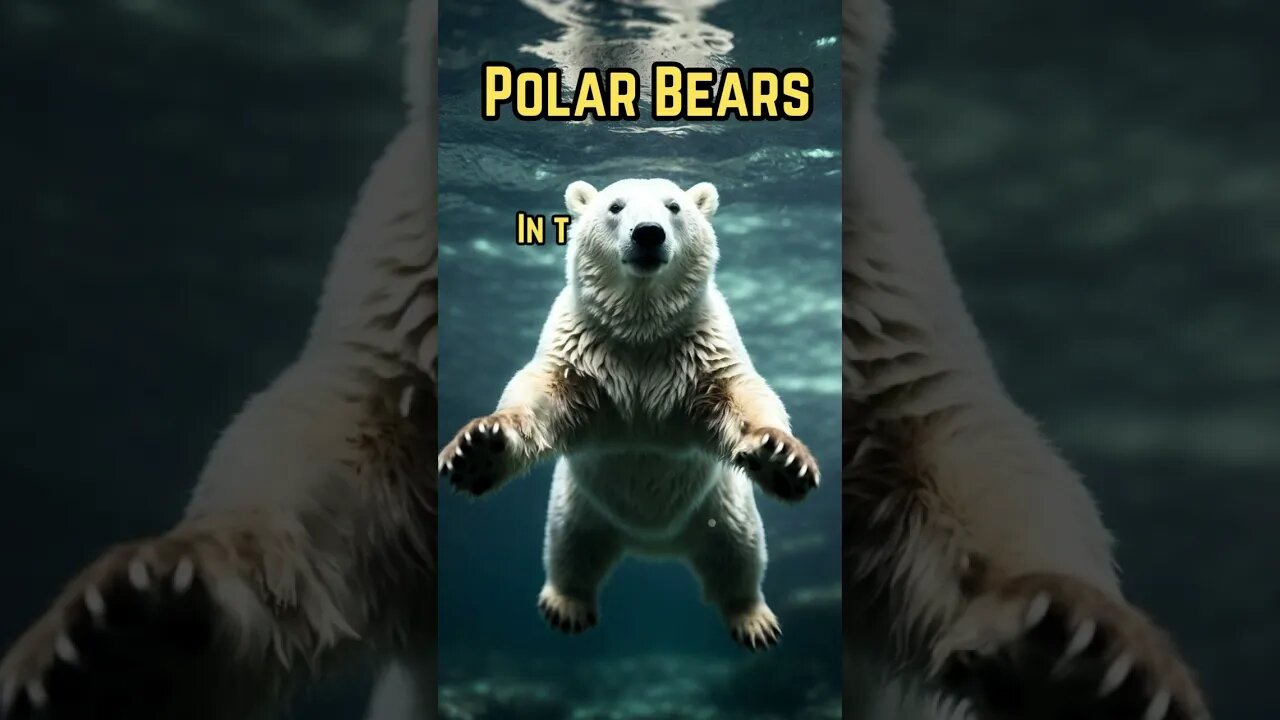Premium Only Content

7 Facts about Polar Bears #shorts #facts #polarbear
1 Name: Polar Bear
2 Scientific Name: Ursus maritimus
3 Family: Ursidae (the bear family)
4 Size: Polar bears are the largest bear species, with males weighing between 900 to 1,600 pounds (410 to 725 kilograms).
5 Habitat: They are primarily found in the Arctic region, including the Arctic Ocean, sea ice, and surrounding land.
6 Diet: Polar bears are carnivorous and mainly feed on seals, particularly ringed and bearded seals.
7 Paws: They have large, powerful paws with non-retractable claws, which help them grip the ice.
8 Fur: Their fur appears white but is actually translucent, with a layer of blubber underneath for insulation.
9 Swimming Ability: Polar bears are strong swimmers and can cover long distances in the water.
10 Conservation Status: They are classified as vulnerable due to the loss of sea ice caused by climate change.
11 Cubs: Female polar bears give birth to 1 to 3 cubs, typically in December or January.
12 Mating: Polar bears are solitary animals except during mating season.
13 Motherhood: Mothers are highly protective and teach their cubs essential survival skills.
14 Life Span: In the wild, they generally live up to 20-30 years.
15 Temperature Adaptation: Polar bears have adapted to extreme cold, with a low surface area-to-volume ratio, reducing heat loss.
16 Threats: Climate change and melting ice are the primary threats to their survival.
17 Stalking Technique: They stalk seals by waiting near breathing holes in the ice.
18 Arctic Apex Predators: Polar bears are the top predators in the Arctic food chain.
19 Inuit Culture: They have cultural significance for Indigenous peoples in the Arctic, like the Inuit.
20 Research: Scientists study polar bears to monitor their populations and understand the impact of climate change.
-
 9:34
9:34
Dr David Jockers
13 hours ago $3.05 earnedThe Shocking Truth About Butter
43.6K1 -
 9:05
9:05
Bearing
20 hours agoJaguar's Woke New Ad is SHOCKINGLY Bad 😬
8.03K59 -
 7:55
7:55
Chris From The 740
13 hours ago $2.49 earnedWill The AK Project Function - Let's Head To The Range And Find Out
5.46K7 -
 2:39
2:39
BIG NEM
9 hours agoHygiene HORROR: The "Yurt Incident"
3.58K1 -
 3:19:21
3:19:21
Price of Reason
12 hours agoHollywood Celebrities FLEE the US After Trump Win! Wicked Movie Review! Gaming Journos MAD at Elon!
62.8K31 -
 3:55:45
3:55:45
Alex Zedra
8 hours agoLIVE! Last Map on The Escape: SCARY GAME.
66.2K3 -
 1:14:07
1:14:07
Glenn Greenwald
12 hours agoComedian Dave Smith On Trump's Picks, Israel, Ukraine, and More | SYSTEM UPDATE #370
165K212 -
 1:09:07
1:09:07
Donald Trump Jr.
15 hours agoBreaking News on Latest Cabinet Picks, Plus Behind the Scenes at SpaceX & Darren Beattie Joins | TRIGGERED Ep.193
203K713 -
 1:42:43
1:42:43
Roseanne Barr
11 hours ago $61.84 earnedGod Won, F*ck You | The Roseanne Barr Podcast #75
89.1K191 -
 2:08:38
2:08:38
Slightly Offensive
12 hours ago $38.02 earnedDEEP STATE WINS?! Matt Gaetz OUSTED as AG & Russia ESCALATES War | Guest: The Lectern Guy
87.1K45